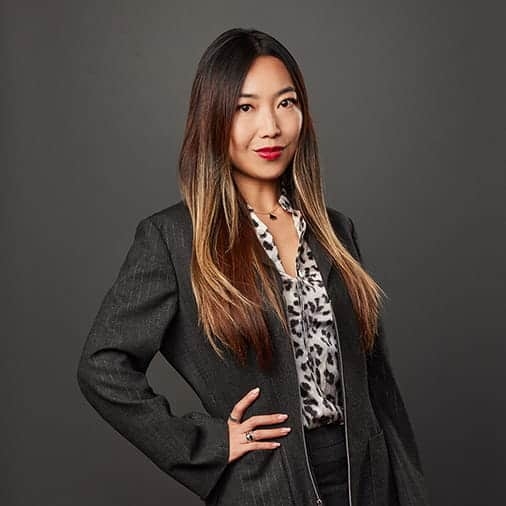Business Advisory: The importance of culture to maximise transformation and M&A integration success
Discussing culture brings to mind the infamous quote by Peter Ducker, “Culture eats strategy for breakfast”. No matter how well designed your strategic plan is for M&A or large transformation programs, successful execution hinges on understanding, maintaining, creating and integrating great organisational culture.
Regardless of M&A deal size or transformation complexity, “people” within each business enable and deliver its strategic priorities. Each business’ purpose and culture is unique and may have even been formed over many years. Understanding people’s behaviours, values and drivers is crucial to ensure synergy realisation in an M&A context and ways of working are cohesive during long transformation programs.
Warning signs of poor cultural integration in M&A

What is organisational culture and why it matters?
Having witnessed many organisational cultures throughout my career, I’d describe culture as the sum of values, behaviours and actions that people within an organisation display consistently over a period of time.
A strong organisational culture enhances employee engagement, drives motivation, and aligns people towards common company goals, resulting in increased productivity and decreased turnover.
These outcomes are critical for any large-scale transformation and M&A program to succeed.
In an M&A context, the challenge is to identify inconsistencies between two organisational cultures (values, behaviours and actions) and then remove these inconsistencies so that you have a single and deliberate culture.
Identifying and understanding different cultures

Why cultural integration fails or causes issues during transformation?
It comes down to a lack of a well-designed plan to build and reinforce the desired organisational culture throughout the integration. Nearly 60% of organisations admit to not having a specific approach in assessing and integrating culture in a deal (Aon Hewitt). This also applies during large-scale transformation programs, which need to support people with the right tools, processes and activities that help execute desired strategies.
Most people agree that maintaining an organisation’s culture is important during transformation and M&A, but there isn’t a clear approach and plan to execute and monitor to ensure long-term success.
A strong culture can help align the values and goals of all employees, leading to a shared sense of purpose and direction. This is critical during transformation programs, as it helps create a supportive environment where everyone understands why changes need to be made and are all working towards the same outcome.
An interview with Pina Sciarrone, CEO and Managing Director of AIA Financial Services

Pina Sciarrone
CEO and Managing Director, AIA Financial Services
As one of Australia’s leading CEOs, Pina Sciarrone shares her thoughts on effective cultural integration and how she builds high-performing teams during transformative programs.
Simon Uykun: Most businesses often go through some form of transformational change every 5-10 years. What would you say is the most important consideration for leaders during transformation and M&A?
Pina Sciarrone: It all starts with recognising that any major transformation or M&A program, causes significant distraction and disruption not only for your business but also for your employees.
It takes away people’s current focus and depending on how it’s managed, can cause stress, anxiety and eat away at the culture of your business. Regardless of the type of change, I always ensure every program has a dedicated “people” workstream that focuses on:
- building the right plans for our people that get the right strategic outcome, whilst bringing us closer together
- creating a transparent environment that communicates why we are executing a particular strategy or transformation
- allowing genuine and open feedback loops on what is/isn’t working throughout the program
Overall, with any major integration or transformation program, I ensure there is clear accountability or a RASCI matrix. Our board, executive team and all leaders need to know who is responsible for delivering against our plan to protect our people, brand and culture.
Simon Uykun: What’s your advice to leaders on the best way to communicate transformative change to people?
Pina Sciarrone: As a leader, you are at the front and centre of the change. You can’t – and shouldn’t - hide behind others. It’s our responsibility as leaders to be upfront, transparent and clearly articulate why the transformation needs to occur.
I see this as an opportunity for leaders and all people leaders to be leading the change and supporting our people through both transformation and change (eg new systems, products, processes and acquisitions) and sometimes through difficult times that we can’t control (eg shrinking market, legislation, divestments and restructures).
My biggest piece of advice on this is you must communicate. Even if it feels like you’re over-communicating. Ensure you build a regular cadence of communications, both written and verbal as part of your operating rhythm and BAU. We all have busy schedules and so much to do each day, so reinforcing key messages on how we need to improve, change and realise our strategic goals becomes critical. It also supports transparency – nothing erodes culture like feeling management is keeping secrets and not listening to their teams.
I make a point of starting town halls and leadership meetings with a reminder of our strategic purpose, and address what might be interrupting us in achieving these goals.
Simon Uykun: How do you build the right culture across your team and how do you think about cultural integration during M&A?
Pina Sciarrone: Everyone needs to be taken on a journey to understand what your organisation or team has to offer, which will make it a fulfilling and great place to work. It’s the classic “what’s in it for me”. This also applies to any new strategy or transformation program. People need to understand why change is being introduced, how they will be impacted and also what their role is in helping deliver and adapt to that change. They also need the opportunity to ask questions and offer feedback – to be heard while they process the change and what it means for them. If you do that right, the best outcome is a team that is onboard, focused and clear about what “we as a team” need to start doing to ensure our goals can be realised.
Another essential part of good culture is trust. Two-way communication and transparency are key to that. We have learnt that feedback is only as good as the action you take with it, so I’m all about being transparent with that feedback and taking responsibility for addressing it. We create forums and communications to consciously build that team rapport and ensure we are all pulling in the same direction. We go one step further, by ensuring any new initiatives are discussed in an open forum so we can track and monitor ongoing effectiveness and discuss roadblocks and feedback.
For me, culture is of the utmost importance and it needs constant care and attention. We have strong values and beliefs at AIA, that we need to protect and nurture. And it’s not just the big things like ensuring people understand our vision and the role they play in helping us achieve it, but also the little things like celebrating wins along the way and developing professional relationships and team rapport. If people feel acknowledged, encouraged, empowered and are having fun, they’re so much more motivated to work hard for your team and the organisation towards a collective goal. That’s a great culture in action.
Wrap up
M&A and transformation programs are complicated and significantly disrupt an organisation. We shouldn’t forget about bringing people on a journey that builds trust and ensures the culture of the organisation is protected. Having a plan and executing on this is a simple, effective formula that will help bring people closer together (if done with the right intent, authenticity and commitment).

Simon Uykun
Integrated M&A Lead, Australia and New Zealand
Simon specialises in M&A solutions, with over 20 years’ experience providing advice to clients in various industries. Simon is a firm believer in the power of connected businesses and the need to align the front, middle, and back office to consistently deliver transformative change. His deep experience in post-merger integration and separation ensures his clients realise the full value of their deals.
For advice on how we can support you on your M&A and transformation journey, reach out to simon.uykun@dlapiper.com.
About
For the last 14 years, DLA Piper has been ranked number one by global M&A deal count and the Business Advisory team brings specialist experience across the M&A lifecycle, including supporting clients with large-scale transformation. With experience in deal strategy, execution and integration they are experts in navigating complex challenges to maximise value realisation.



